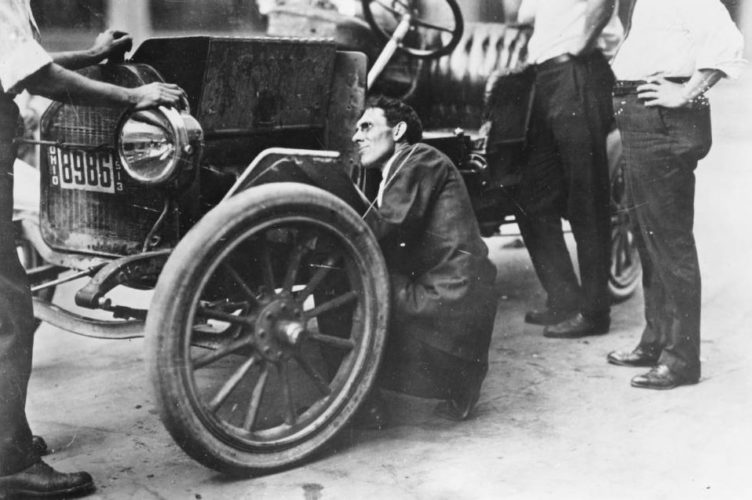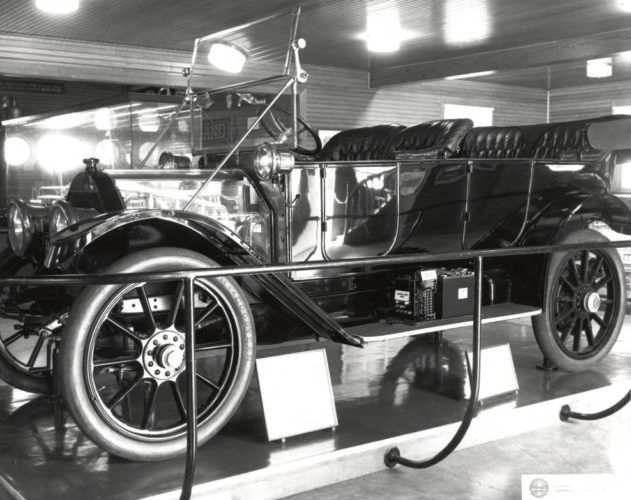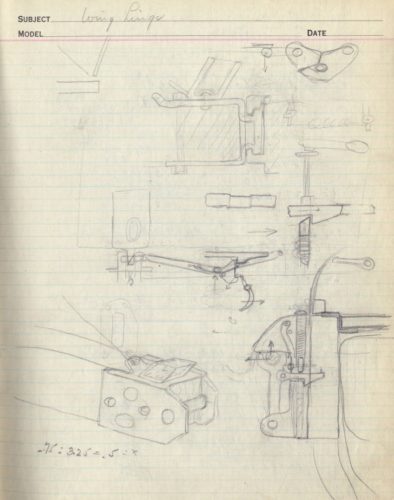Charles F. Kettering, Ohio Inventor

Charles Kettering was born August 29, 1876, on a farm near Loudonville, Ohio. After graduating high school, he took classes at the College of Wooster and worked as a teacher in a one-room schoolhouse before enrolling at The Ohio State University. After withdrawing due to eye problems, he was able to resume studies and graduate in 1904 with a degree in electrical engineering.

After graduation, Kettering joined the research laboratory at the Dayton-based National Cash Register Company (NCR). There he invented the electric cash register, and was soon promoted to head of research and development. Beginning in 1907, Kettering, fellow NCR engineer Edward Deeds, and a few other coworkers began working nights and weekends in Deeds’ barn to develop automobile improvements. Kettering resigned from NCR in 1909 and, along with Deeds, founded the Dayton Engineering Laboratories Company (Delco).
Early automobiles were started by an iron hand crank, which could kick back hard enough to cause broken bones. When a friend of Cadillac executive Henry Leland died of complications from a hand crank injury, Leland hired Kettering to engineer an electric self-starter. The starter was first installed in the 1912 Cadillac and was patented in 1915. By 1920, the “Delco” was standard on most new cars.
The company was also known for the Delco Light Generator, which revolutionized farm life by supplying electricity in rural areas where municipal power lines didn’t yet reach. In 1916, Kettering and Deeds sold Delco to General Motors for $2.5 million—the equivalent of nearly $60 million today.

The following year Kettering, Deeds, and other investors joined Orville Wright in the Dayton-Wright Airplane Company, which manufactured planes for use in World War I. There, Kettering developed the “Bug,” a self-guided aerial torpedo that is considered to be the world’s first aerial missile. The small monoplane used twelve-foot cardboard wings and a 40-horsepower engine to carry a warhead to its target; however, the war ended before any Bugs could be deployed. Kettering’s other aviation inventions include retractable landing gear and autopilot.
In 1920, Kettering became vice president and director of research at General Motors, a position he held for 27 years. Delco, his former company, became the foundation of the General Motors Research Corporation. At GM Kettering directed the development of various automobile improvements including variable-speed transmissions, quick-drying auto paints, spark plugs, four-wheel brakes, and safety glass. His diesel engine improvements allowed GM to manufacture the first diesel freight locomotive in 1939. He also developed the coolant Freon, used in refrigerators and air conditioners.
Kettering’s ingenuity also extended to the medical field, where he developed an incubator for premature infants and conducted research that eventually led to today’s magnetic imaging equipment. In 1945, a year after his sister died of cancer, Kettering and GM president Alfred Sloan founded the Sloan-Kettering Institute for cancer research in New York City. Kettering’s wife Olive died of pancreatic cancer the following year.
Kettering retired from GM the year after Olive’s death, although he continued to consult for the company. After suffering a number of strokes, Kettering died November 25, 1958, at his home in Dayton. At the time, only Thomas Edison (another Ohioan) held more patents in his name.
Thank you to Stephanie Michaels, Research and Catalog Services Librarian at theState Library of Ohio, for this week’s post!



Leave a Reply
You must be logged in to post a comment.